
How to Grow Sunflowers: All You Need To Know
Published: 24/01/2023 | Updated: 18/04/2023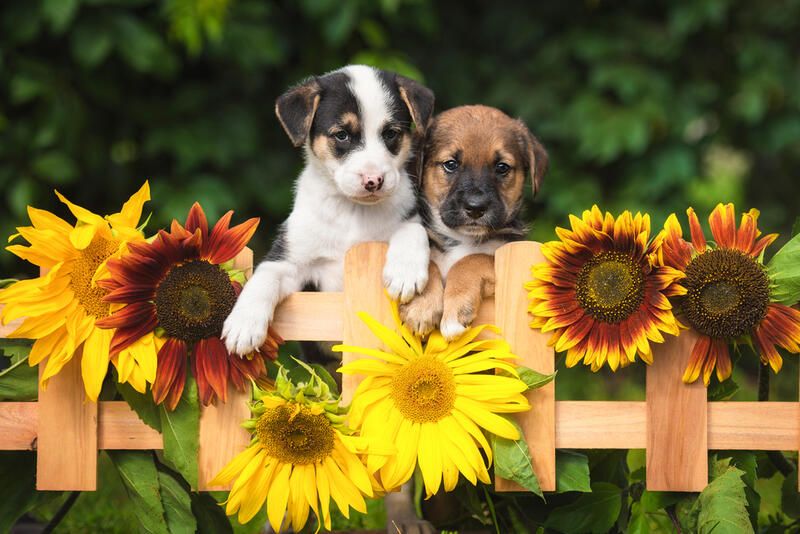
There's always a specific memory when it comes to early fall, the trees are transitioning to new colors, some flowers die while others flourish, and the sunflowers make their bright yellow appearance. Sunflowers have always been an autumn staple; they bring life back into a dying and changing garden. This guide will give you everything you need to know about growing and caring for these autumn beauties.


With colorful blooms that go throughout summer, sunflowers are heat-tolerant, resistant to pests, and attractive to pollinators and birds. Sunflowers produce gorgeous cut flowers, but they also offer food and attract wildlife! They produce oil and seeds that are yummy for birds and people!
General Information
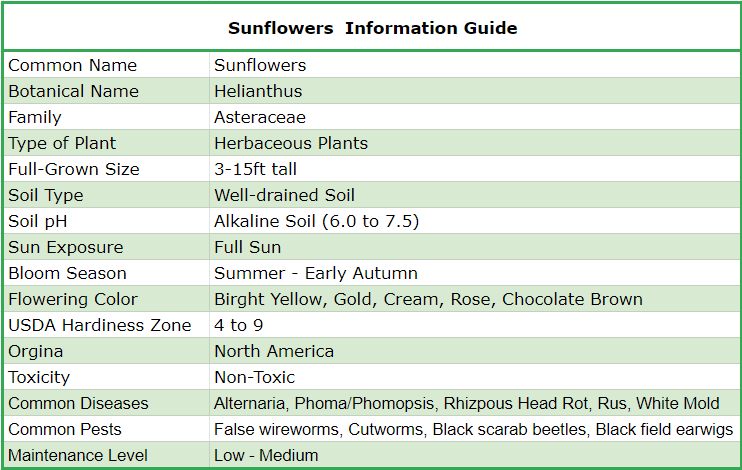
Sunflowers 101
Sunflowers are a type of annual plant. With bright yellow (and occasionally red or brown) petals radiating from brown cores that develop into a crown packed with seed, they resemble enormous daisies.
Sunflowers are strong, towering plants that can grow up to 14 feet tall in some types. Smaller variations that are only a foot tall or less can fit in pots or little gardens. Sunflowers are an excellent choice for a wildlife or pollinator garden since they come in many types that draw bees and birds that eat sunflower nectar and seeds.
Sunflowers and other heliotropes spin their blooms to face the Sun's path through the sky as it moves from east to west. To prepare for the rising sun, they then switch their blooms back to face the east at night. Heliotropism happens in the early stages before the flower becomes extensively seeded.
There is undoubtedly a sunflower that will grow in your garden because there is such a wide variety available nowadays. Choose among plants with spreading branches or single stems, lots of pollen for pollinators or none at all (great for bouquets), small size or height relative to other garden plants, or edible seed production.
Recommended Sunflower Varieties
Everyone is familiar with the giant sunflowers that are supported by eight-foot-tall stalks. But did anyone tell you that some varieties have a modest 15-inch height restriction? The family of sunflowers is diverse!
-
'Autumn Beauty': One of the most eye-catching cultivars, 'Autumn Beauty' features several 6-inch flowers in colors of golden, bronze, and mahogany on branching stems that can reach heights of 7 feet.
-
'Sunrich Gold': This sunflower produces a single, 4- to 6-inch blossom and grows to a height of about 5 feet, making it a perfect flower for bouquets and arrangements. The large, pollen-free flowers have green centers and beautiful, golden-yellow rays.
-
The classic enormous sunflower, the towering "Mammoth" type can reach heights of more than 12 feet. Its seeds are great for snacks and for providing food for the birds.
-
'Teddy Bear' is a type of dwarf variety. it's a pretty small 2- to 3-foot-tall sunflower that is ideal for pots and small gardens. The 5-inch, fluffy, deep-gold flowers keep their shape for days in a vase.
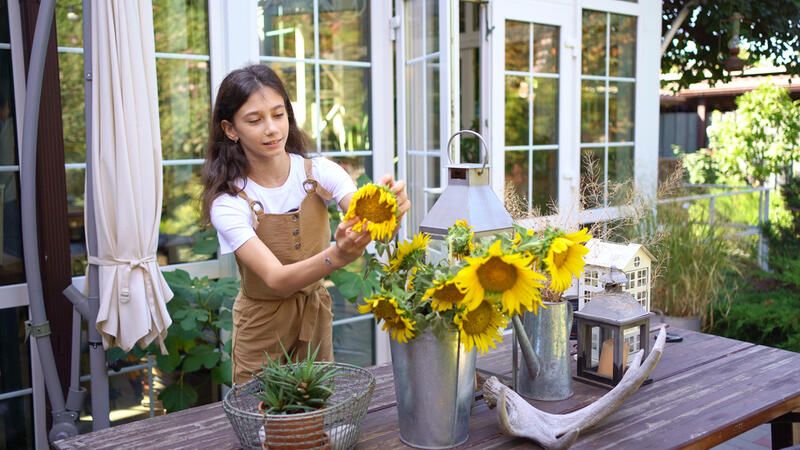
How to Plant Sunflowers
When it comes to planting sunflowers you need to make sure you choose the right location. Here are a few things to look out for when choosing your planting site.
-
Sun enthusiasts and sunflowers thrive in locations with six to eight hours of direct sunlight each day.
-
Sunflower plants demand loose, well-drained soil with a pH of 6.0 to 7.5 because their lengthy tap roots need to extend several feet into the earth.
-
Sunflowers are strong eaters, therefore nutrient-rich soil that has compost or other organic matter added will make them healthiest and produce the most blooms. Make sure the soil is well-draining soil as well to avoid rot.
-
If you select a smaller type, such as "Short Stuff" or "Teddy Bear," you can grow sunflowers in pots. Just make sure the pot is deep enough to support their tap root.
-
Plant them in a covered area or along a fence so they are shielded from the wind if you are growing one of the enormous varieties that can grow to heights of up to ten feet. If not, a gust of wind can knock them over.
How to Plant Sunflower Seeds
-
You can purchase a sunflower seed packet from your local garden store or online.
-
Sow sunflower seeds directly 6 inches apart, no deeper than an inch. Once the seedlings are 6 inches tall, thin them out so that the strongest plants are spaced about 12 inches apart.
-
Starting in the spring, stagger your planting by planting a fresh row of seeds every two to three weeks for ongoing flowering. This process, known as succession planting, will provide you with continual blooming up until the first frost.
-
To prevent them from toppling over in the wind, a small amount of fertilizer added in at planting time will foster the formation of strong roots.
-
To continue enjoying continual blooms, experiment with plants spaced out over 5 to 6 weeks.
-
How much time do sunflowers need to grow? Depending on the cultivar, it might take between 80 and 120 days for a seed to bloom after being planted in the ground.
-
Spread netting over the planted area until seeds sprout if you notice birds scrounging for the seeds. Make sure to keep birds away from your seeds
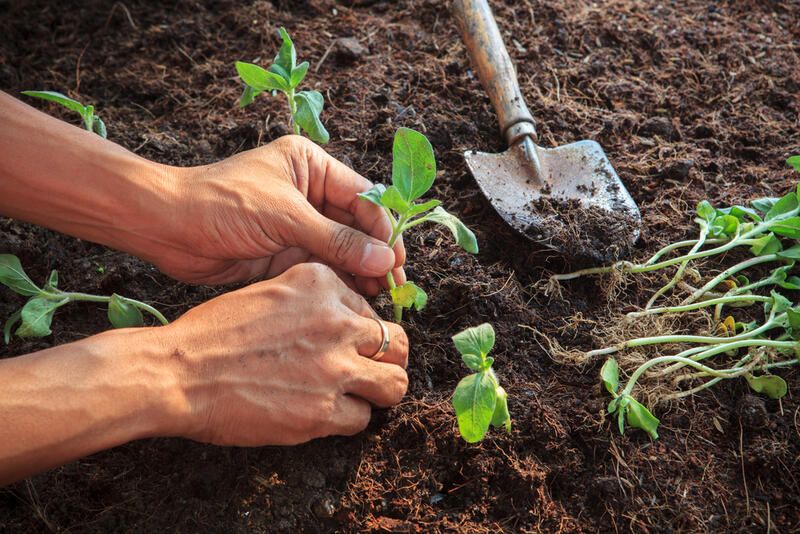
When to Plant Sunflowers
-
After the threat of spring, frost has gone and the soil temperature has reached 60 degrees, sow seeds. Depending on where you reside, this will happen between March and May.
-
Sunflower roots do not like being disturbed, thus direct sowing is advised rather than transplanting.
-
Although you may purchase starter plants from nurseries and home improvement stores, it is simplest to grow sunflowers from seed that is placed straight into the ground. You can cultivate more sunflower kinds if you start with seeds. Sunflowers can also be grown from seed quite easily.
Growing Sunflowers
Providing the right growth environment for your sunflowers might seem intimidating but it's a lot easier than you might think. Let's dive in!
-
When the plant is still young, irrigate the area of 3 to 4 inches surrounding the roots. Placing bait for snails or slugs around the stem of the plant could help protect it.
-
After the plant has been established, water it deeply but sparingly to promote deep roots. Water your plants once a week with several gallons of water, unless the weather is unusually dry or wet.
-
Plants should only receive a small amount of fertilizer; otherwise, stems may break in the fall. You can mix diluted fertilizer into the water but keep it away from the plant's base. It might be helpful to create a moat in a circle 18 inches in diameter around the plant.
-
Support is necessary for tall species and cultivars. For any plant that has a robust, solitary stem and requires support for a brief length of time, bamboo stakes are an excellent option.
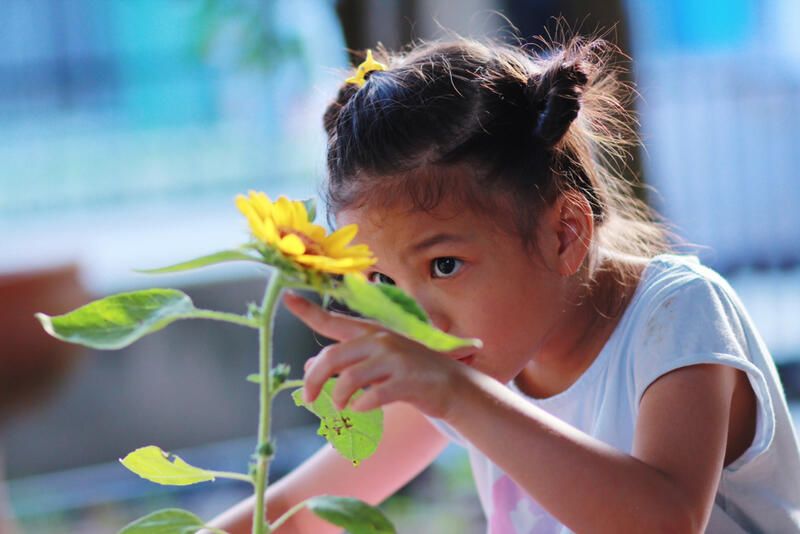
Harvesting
Harvest The Seeds
After the petals fall off, the brown center of the sunflower will develop into a seed head. The seeds can be harvested and consumed as a nutrient-rich snack, or you can preserve the seeds to replant your garden the following year. Grow sunflowers if you want to collect and consume the seed.
-
Dry the flower on or off the stem until the seeds are full and the rear of the head turns brown.
-
After the seed heads mature and the petals fall off the blooms, you must cover the flower heads with garden fleece, cheesecloth, or a paper bag to prevent birds and squirrels from stealing the seed.
-
Remove the plant's head, leaving a stem that is about 6 inches long. Put the head in a receptacle to catch any stray seeds.
-
Brush your palm over the seed head to remove the seeds by knocking them out.
-
Save the seeds you intend to plant and keep them until planting time in an airtight container in a cold, dry location.
Cutting Sunflowers for Bouquets
-
To stimulate side blooms in indoor bouquets, trim the main stem immediately before the flower bud opens.
-
Early in the morning, trim the stems. Flowers may wilt if they are harvested in the middle of the day.
-
Carefully handle sunflowers. In water kept at room temperature, the blooms ought to live for at least a week.
-
Sunflowers should be placed in large containers that can support their hefty heads, and the water should be changed daily to keep them fresh.
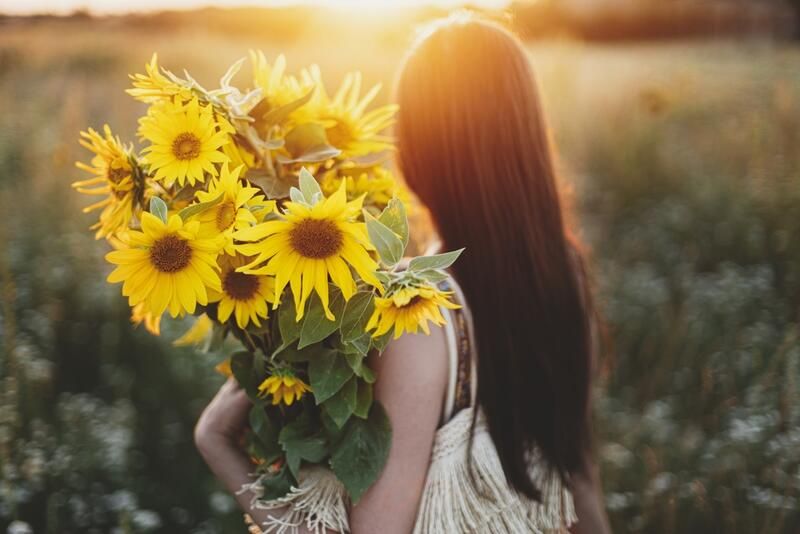
Pests & Diseases
The seeds will pique the interest of birds and squirrels. If you intend to use the seeds, use barriers to keep animals away. You can drape white polyspun garden fleece over each seed head as it develops and the blossom droops.
A high wire fence will deter deer from your property if you have any. Young sunflowers may have their heads nibbled off by curious deer.
Generally speaking, sunflowers are insect-free. Sometimes a tiny grey moth may lay its eggs in the blooms. Take the worms you want from the plants.
The plants can also be harmed by powdery mildew, rust, and downy mildew. Spray a general garden fungicide if fungal problems are discovered early.
Garden Design Tips
-
Avoid planting sun-loving companion plants too close to some sunflower kinds since they can grow very tall and shadow other plants.
-
On the rear of a border bed, along a fence, or as a screen, tall types of sunflowers perform best.
-
Shorter variations can be cultivated in pots or the midst of a border.
Cooking Tricks
The great thing about sunflowers seeds (besides the obvious of course) is that they have around 14 grams of sunflower oil and about 6 grams of protein in only one small measly ounce! Their lipids are almost completely unsaturated with around 9 grams of polyunsaturated fats and have monounsaturated fats of about 3 grams per ounce. But wait, it gets even better! Sunflower oil is a fantastic source of vitamin E and has a substantially high linoleic acid concentration.
-
The best sunflower seeds for luring the widest range of songbirds are those types that yield small, black seeds that are utilized in margarine, cooking oil, cosmetics, and animal feed.
-
The larger, striped seeds are cultivated as snacks and as a component of bread and healthy dishes. They are also used to feed birds, particularly bigger species like mourning doves and jays.
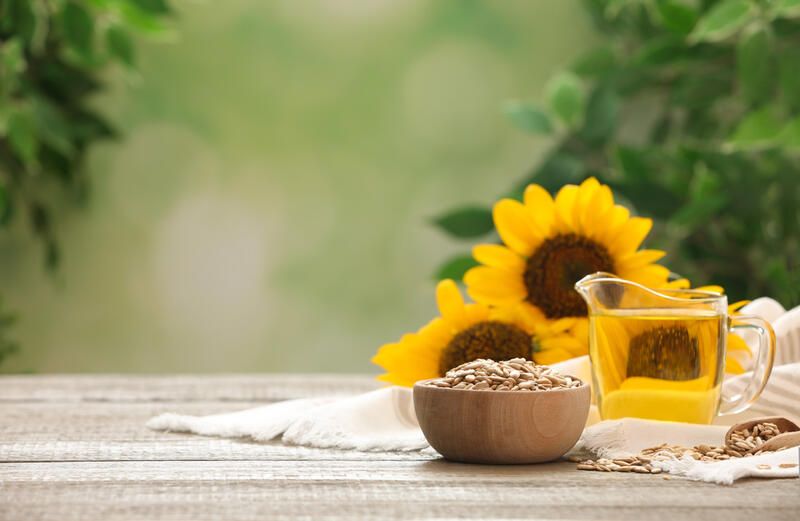
Roasting Sunflower Seeds
All you need to do to roast your soon-to-be delicious sunflower seeds is to soak the seeds overnight in very salty water, drain them and then make sure their dry by patting them down with paper towels.
Now onto the roasting! Pre-heat your oven to 325 degrees Fahrenheit (162 degrees Celsius) and then pop your seed babies into the oven on a baking sheet for 30 minutes, make sure you have the seeds in a single layer! If they're on top of each other they won't roast properly! Once the 30 minutes are up, take your seeds out of the oven and stir them to make sure they are slightly toasted (you can do this while they roast as well). The most important part, make sure you don't burn them!
That's it!
Finally, your seeds are roasted which means you can add a bunch of different delicious flavorings to them! Try adding olive oil, seasoning salt, or BBQ-flavored seasonings for a fun twist!
Time to Get Planting!
You now have everything you need to know and it's time you get those gardening gloves on and get to planting sunflower seeds! Get ready for continuous blooms of gorgeous yellows and pinks every year!
From taller sunflower varieties to smaller flowers, there is a sunflower that is perfect for every garden!


